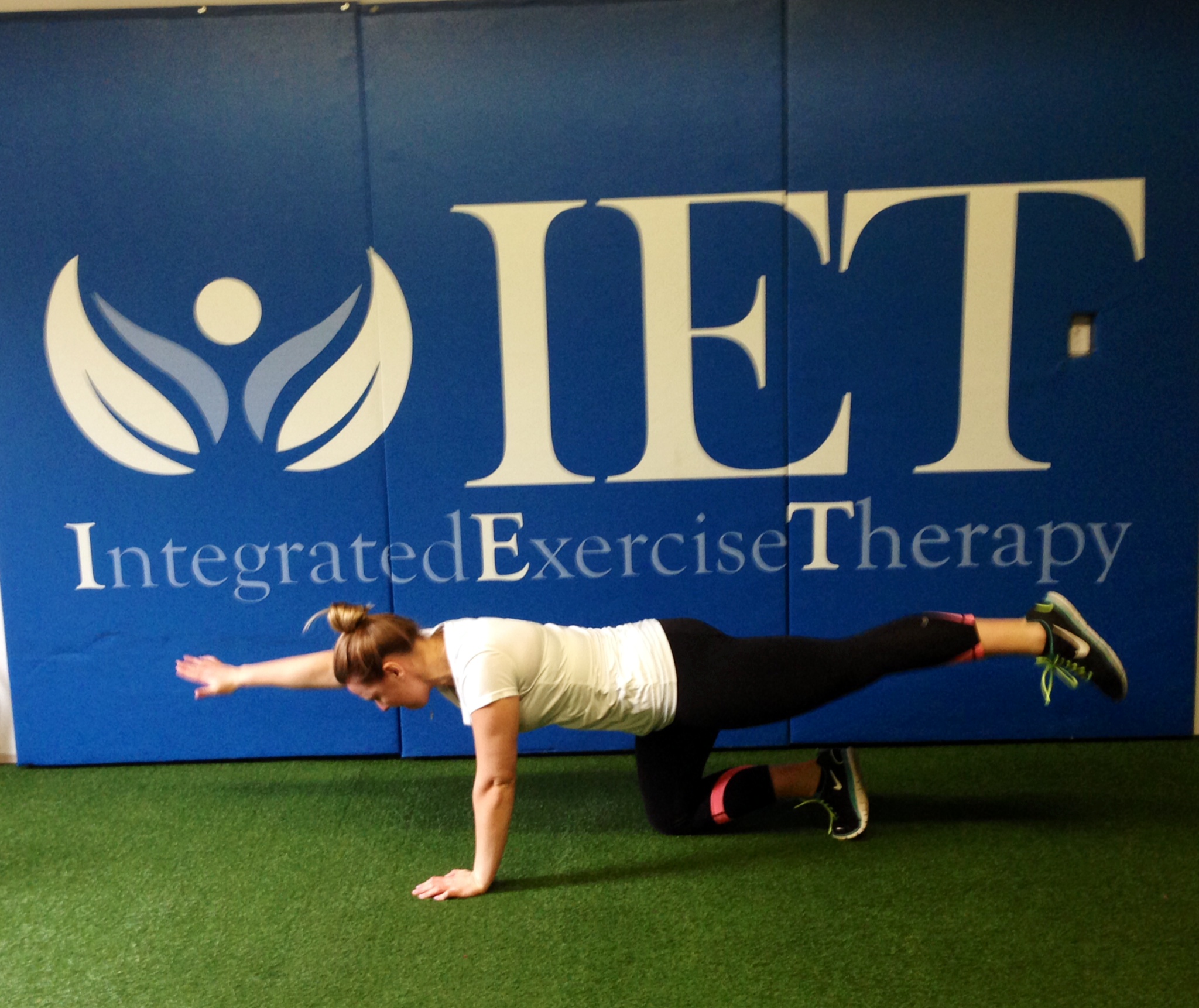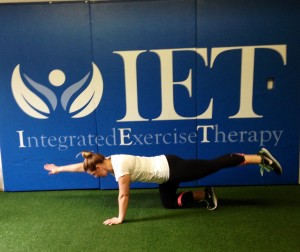Building Rotational Stability and Power by Mike DeLalio
Many of the people who walk through the doors here at IET, in some way or another participate in a rotary activity, so at some point or another we have to develop that power to make them better at whatever it is that they do or want to do. Though, most do not participate in your traditional rotary sports such as golf, hockey, lacrosse, or baseball… we NEED rotary power in our every day life regardless of level of fitness.
However, before we develop rotary power we must FIRST develop rotary stability, a skill important enough to be on the FMS (Functional Movement Screen). Rotary stability begets rotary power and is involved in most activities of daily living and developmental patterns including rolling, crawling and walking.
When training rotary power we must not confuse it with a twisting spinal motion… in fact true rotary power involves a stable lumbar spine. When looking at the lumbar spine in the joint- by- joint approach it is stable joint segment between two mobile joints…the hips and thoracic spine.
Performing rotary activities we are transferring power from the feet, up through the hips, to the t-spine then to the arms, resulting in a baseball throw, golf swing, a lacrosse shot or your gait pattern (if your arms don’t move when you walk you are lacking some sort of rotary stability)!!!
Think of a Newton’s Cradle…you know the desk toy that has 3 marbles attached to string. Your hips, lumbar spine and thoracic spine are each one of those marbles. If we raise the marble representing the hips and let it fall it will transfer energy to the middle one and through to the third representing the thoracic spine which then moves. Now should we replace the lumbar spine marble with a cube of Jell-O, the transfer of energy would not work so well!
The take away from this illustration is that in order to develop rotary power we must first train rotary stability as a pre-cursor, otherwise we will have an energy leak somewhere. Rotary stability is therefore a necessity throughout our life. Sadly many of the people walking today are lacking in rotary stability and have found ways in which to compensate for that lack of stability, much of which consist of hip compression, t- spine immobility and gluteal amnesia!!!
The question is then… how do we train rotary stability and progress to rotary power?
Here at IET, it begins on your first session when we screen you and assess your rotary stability using the Functional Movement Screen (FMS) or Selective Functional Movement Assessment (SFMA), and proceed from there. We begin by using rolling, and crawling patterns. After that we follow human development and utilize kneeling patterns to introduce rotation and stabilization against that rotation starting with the Palloff Press or anti rotational holds, in the tall and half kneeling positions.
Supine & Tall Kneeling Palloff Press
We then progress to chop and lift patterns to again stabilize against the rotation cuing a tall spine and chest. After the client has developed a mastery of these patterns we progress to more ballistic rotary power and this is the first introduction of rotary power work. These include, 1/2 kneeling chop slams (for more on this reference this article: Strengthen Your Core), rotational toss, and shot put drills. In conjunction with these drills we also work to improve glute strength as well as thoracic mobility, to help increase rotary power and range. As rotary power increases we continue to work on rotary stability in concert with the power.
Remember good movement starts from the inside out.
Move Better ~ Feel Better ~ Perform Better







